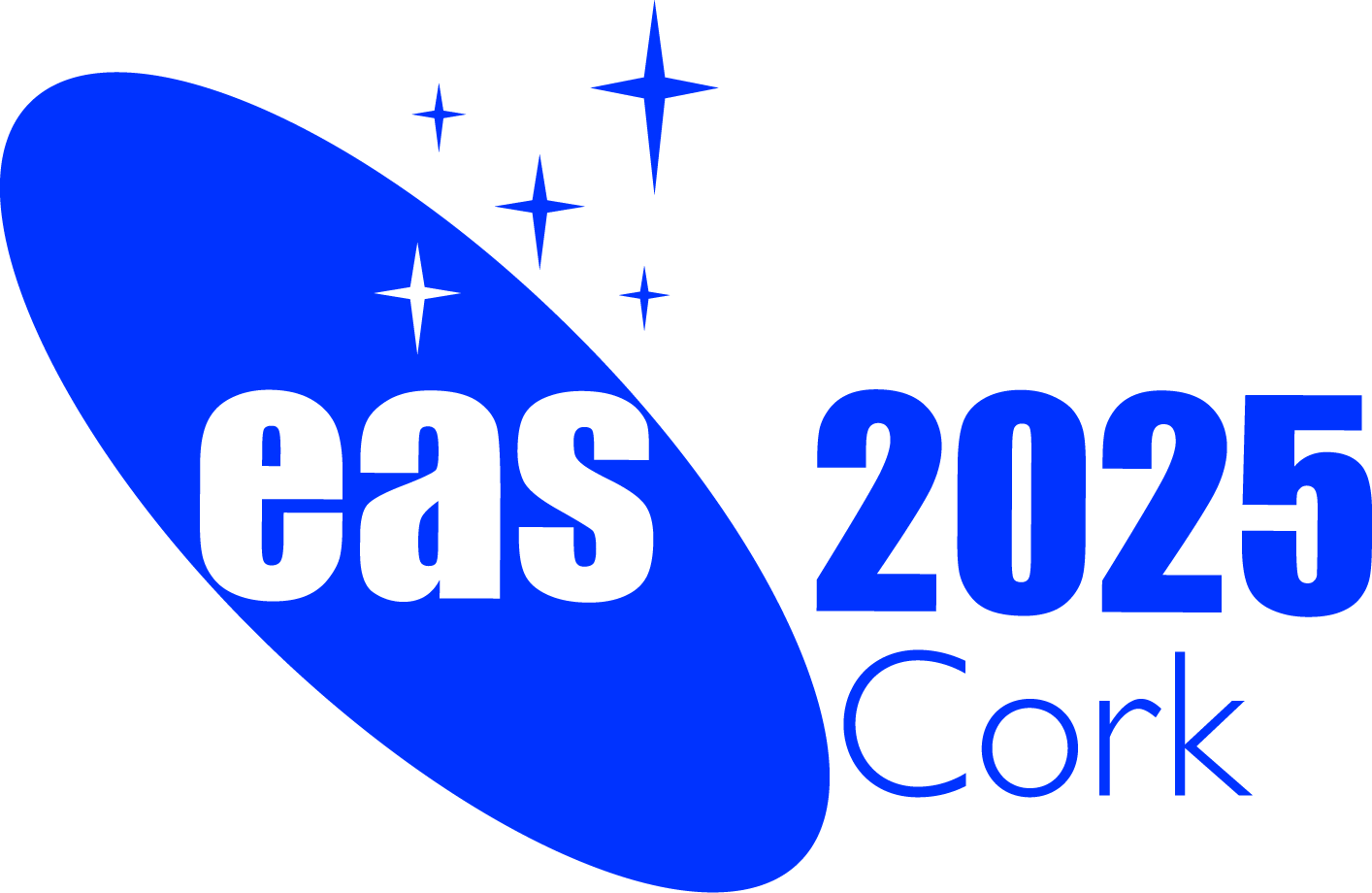Symposium S1
26-27 June 2025
Gaia: The (TWO) Billion Star Galaxy Census: Anticipating the Leap in Understanding of Planets, Stars, the Milky Way with Gaia DR4
News:
- 20240205 Session Information updated.
Aims and scope
 The updated ESA Gaia Billion Star Census of the Milky Way, was released in June 2022 as Gaia Data Release 3 (Gaia DR3). This release updated and extended Gaia EDR3, and contains the full five parameter astrometry for ~1.5 billion sources, along with low and medium resolution spectra and a wealth of associated data (such as mean radial velocities for brighter objects). Full details for Gaia DR3 are at https://www.cosmos.esa.int/web/gaia/data-release-3 for details). More recently the Gaia Focused Product Release (Gaia FPR) (https://www.cosmos.esa.int/web/gaia/focused-product-release) with a set of five high value data products, spanning solar system objects to gravitational lenses was issued in Oct 2023.
The updated ESA Gaia Billion Star Census of the Milky Way, was released in June 2022 as Gaia Data Release 3 (Gaia DR3). This release updated and extended Gaia EDR3, and contains the full five parameter astrometry for ~1.5 billion sources, along with low and medium resolution spectra and a wealth of associated data (such as mean radial velocities for brighter objects). Full details for Gaia DR3 are at https://www.cosmos.esa.int/web/gaia/data-release-3 for details). More recently the Gaia Focused Product Release (Gaia FPR) (https://www.cosmos.esa.int/web/gaia/focused-product-release) with a set of five high value data products, spanning solar system objects to gravitational lenses was issued in Oct 2023.
Gaia EDR3, DR3 and the FPR mark the most recent major milestones in the Gaia mission. Gaia continues to revolutionise our understanding of the formation history of the Milky Way, and is having a significant impact on many other areas of astronomy ranging from solar system science to quasars.
The key goals of this symposium will be for the Gaia/GREAT(1) and related communities (and especially early stage researchers) to present and discuss their science highlights resulting from Gaia EDR3/ DR3/ FPR. It will allow the Gaia project to update the science community with the latest scientific and technical performance of Gaia, review the most recent Gaia enabled science, and provide a look ahead to the rapidly approaching seminal release of Gaia DR4, the full release of the 5 year Gaia nominal mission, which will be released later in 2026. In particular there will be presentations highlighting the new DR4 data products, especially the extended time series data, including epoch photometry, spectroscopy, and astrometry.
GREAT plenary meetings have run since 2009, allowing members of the GREAT and
wider community to participate in a dynamic fashion. They are structured around
Gaia updates, presentations from related organisations (e.g. ESO), reports from
new initiatives, and new science results from the network activities.
This will be the 18th GREAT plenary, which since 2012 have been organised at the EAS Annual Meetings (previously EWASS). See the links to online materials at http://great.ast.cam.ac.uk/Greatwiki/GreatHome for the Gaia/ GREAT symposia held
at the EAS Annual Meetings in Rome (S5), Turku (S11, SM5), Geneva (S3), La Laguna (S9),
Athens (S1), Prague (S2), Liverpool (S2), Lyon (SS28), Leiden-virtual (S10), Leiden-virtual (S15), Valencia (S12), Krakow (S3) and Padova (S4) - talks online at https://great.ast.cam.ac.uk/Greatwiki/GreatMeet-PM17).
The symposium will provide an opportunity to update the community as to the science return of the new data release. In addition the meeting will allow the science potential of the full epoch data in Gaia DR4 to be discussed. The symposium will include space for updates on initiatives aimed at optimising or leveraging the data from Gaia, together with presentations on the science topics where Gaia will have the highest impact.
In addition we will organise a lunchtime hands-on session, providing demonstrations of the Gaia Data Archive, and plans for future enhancements. The lunch session will also include a set of poster lightening talks together with an update on next generation astrometry mission developments (GaiaNIR) in the context of the ESA Voyage 2050.
(1) GREAT (an initiative of the ESA Gaia Project, Gaia Science Team and Data
Processing and Analysis Consortium (DPAC) Executive) is a pan-European research
network involving over 1000 researchers in 20+ countries with a common interest
in maximising the science potential of Gaia ( http://www.great-esf.eu). GREAT, recently in
the form of the MW-Gaia COST Action ( https://www.cost.eu/actions/CA18104) (2019-2023) and the MWGaia Doctoral Network ( https://www.mwgaiadn.eu/) (2023-2027) was/is financially supporting networking activities across Europe.
Programme
- Gaia DR3: Highlight Science including a review of recent major science highlights from Gaia DR3, Gaia FPR and science discovery enabled by Gaia, with attention to the potential of Gaia DR4.
- Gaia / GREAT/MW-Gaia / Gaia Unlimited Status
- Gaia EDR3/DR3/FPR: Highlight Science (The Milky Way as a Galaxy)
- Gaia EDR3/DR3/FPR: Highlight Science (The Birth, Life and Death of Stars)
- Gaia EDR3/DR3/FPR: Highlight Science (from Solar system to reference frames)
- Gaia networking and ground based synergies with Gaia
- Lunch session with an update on the Gaia Archive, and update on the ESA Voyage 2050 L mission concept (GaiaNIR), and also an opportunity for
poster presenters to deliver a 'lightening' talk of their (e-)poster.
Invited speakers
The speakers and programme will be available on this EAS 2025 website and also on the GREAT website - see http://great.ast.cam.ac.uk/Greatwiki/GreatMeet-PM18
- Session 1 will include a headline talk from an invited speaker
- Session 2 will include Gaia status update talks from Johannes Sahlmann (Gaia), Anthony Brown and Antonella Vallenari (DPAC), Nic Walton (MW-Gaia)
- All other session talks will be contributed presentations.
Scientific organisers
The co-Chairs are Nicholas Walton (Institute of Astronomy, University of Cambridge, UK), Anthony Brown (Leiden Observatory, Leiden University, NL), Johannes Sahlmann (ESAC, ESA) and Antonella Vallenari INAF-Padua, IT).
Contact
Nicholas Walton (naw at ast.cam.ac.uk)
Updated on Thu Feb 06 12:00:04 CET 2025

 A power cut will shut down all EAS services on Tuesday, 10 January 2017 starting at 7:30 CET.
A power cut will shut down all EAS services on Tuesday, 10 January 2017 starting at 7:30 CET.

